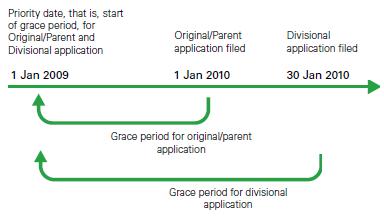Recent case law confirms the priority date of a divisional patent application is the priority date of the parent patent application.
Patents provide 20 year monopolies over inventions. However, to be granted a patent, the invention must be new. This means that use or disclosure of the invention to the public before the patent is filed can be fatal to the patent application. Traditionally, a 12 month 'grace period' was allowed and that 12 months was back-dated from the date that a patent application was filed.
In Mont Adventure Equipment Pty Limited v Phoenix Leisure Group Pty Limited [2008] FCA 1467, which involved a subsequent divisional patent application, the issue before the Courts was whether that grace period for the divisional patent application should be back-dated from the parent application (which is earlier in time) or the divisional application (which is later in time and therefore could potentially jeopardise the patent).
Before the first instance decision was handed down in November 2008, it was commonly assumed that the grace period for publication or use of the invention was back-dated from the date of filing of the parent patent application and that this grace period also applied to the patent's divisional application, even though the divisional application would be filed later than the parent application. Contrary to the expectations of many in the industry, the first instance decision overturned this commonly held assumption. On appeal the Full Federal Court has, however, confirmed that the grace period of a divisional application begins from the priority date of the parent application.
The decision turned on the interpretation of regulation 2.2(1A) of the Patent Regulations 1991 (Cth). Regulation 2.2(1A), coupled with section 24(1)(a) of the Patents Act 1990 (Cth), provides that the person making the decision about whether an invention is novel or involves an inventive or innovative step must disregard any information made publicly available (by publication, disclosure or use of an invention) within 12 months before 'the filing date of the complete application'.
The issue before the Court was whether, for divisional applications, the priority date (the date that the grace period commenced) was one year prior to the filing date of the parent application or one year prior to the filing date of the divisional application. The Full Court confirmed on appeal that the Act and its Regulations are intended to ensure 'that the requirements of novelty and inventive step or innovative step for the claims within the divisional application (which are essential determinants of the validity of the patent application) are assessed by reference to a priority date established by the date of the earlier (or parent or original application), rather than the later (or divisional) specification' (per Jagot J at 76). In other words, the priority date of a divisional patent application is the priority date of the parent patent application.
For Mont Adventure, this meant that the disclosure of its invention by public sale less than 12 months before the filing date of its parent application did not affect the novelty, and thus the validity, of its divisional patent application, even though the public sale of the invention occurred more than 12 months prior to the filing date of its divisional application.
The Full Federal Court has made it clear that, in the case of divisional applications, the priority date is one year prior to the filing date of the parent application not one year prior to the filing date of the divisional application, as illustrated by the timeline below.

© DLA Phillips Fox
DLA Phillips Fox is one of the largest legal firms in Australasia and a member of DLA Piper Group, an alliance of independent legal practices. It is a separate and distinct legal entity. For more information visit www.dlaphillipsfox.com
This publication is intended as a first point of reference and should not be relied on as a substitute for professional advice. Specialist legal advice should always be sought in relation to any particular circumstances.

